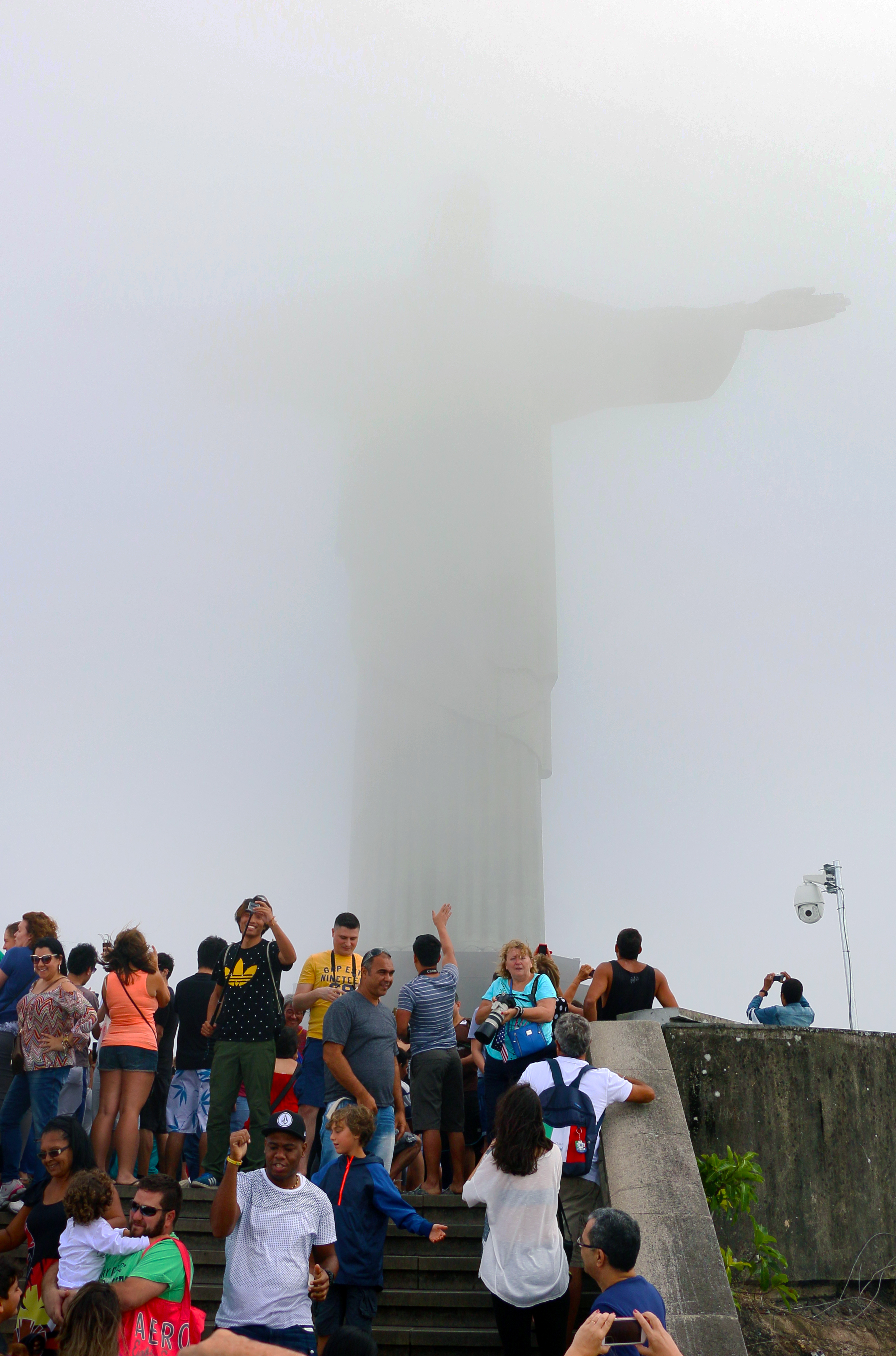Expectations don’t always match up with reality. On a recent Sunday afternoon, on the third day of the Rio 2016 Olympic Games, thousands of tourists from all over the world gathered at the base of Mount Corcovado. They were waiting on a tram to take them to the summit, on a pilgrimage to see the most famous symbol of Rio de Janeiro. It was sunny, a gorgeous day. We expected tighter security screening, but military personnel were all over the place.
After a 20-minute ride, punctuated by stops to discharge commuters who live on the mountain, the tram stopped at the summit. It was so windy that people started putting away their phones for fear they would blow away. It was dark, cloudy and cold, and Christ the Redeemer had disappeared into the mist.
With a profound sense of disappointment, people huddled together to keep warm. They talked about leaving and coming back on another day. They looked for an ideal location to shoot selfies and photographs of themselves, just in case Christ appeared. The wind was so strong that when they stretched out their arms to imitate the statue’s famous pose, they lost their balance.
They were waiting for Jesus to appear. Some wondered what Olympic event he had chosen to attend. Was he watching the Brazilian beach volleyball team beat Czechia? People were lying on the ground, somebody had a yoga mat, and every tenth person had a selfie stick. They turned their back to the statue, stretched out their arms with their phones, and waited for the mist to clear. Sometimes it took 10 minutes to take a selfie with Jesus. Everyone seemed more interested in taking a photograph with him in the background, than in actually observing one of the seven new wonders of the world.
When the mist cleared for just a few seconds, crowds and groups and couples and families cheered with joy, his appearance made more valuable by the long wait. Although the people spoke dozens of languages and couldn’t communicate with each other verbally, cold mist made them work together.
Unknown to many visitors, the experience is common. A nearby Brazilian told us that she had visited Christ the Redeemer eight times and had seen him in sunny blue skies only once.
A fellow Queens student, Jamie Doolittle, put it like this: “If it had been sunny I feel like we would have all been silent and in our own groups, in our own bubbles, capturing the moment for ourselves, but since we all had the common goal of seeing him, we were all excited and cheering together.”
Luis Ottoni of Mackenzie Presbyterian University in São Paulo served as Rio field producer and Portuguese translator on this story.


